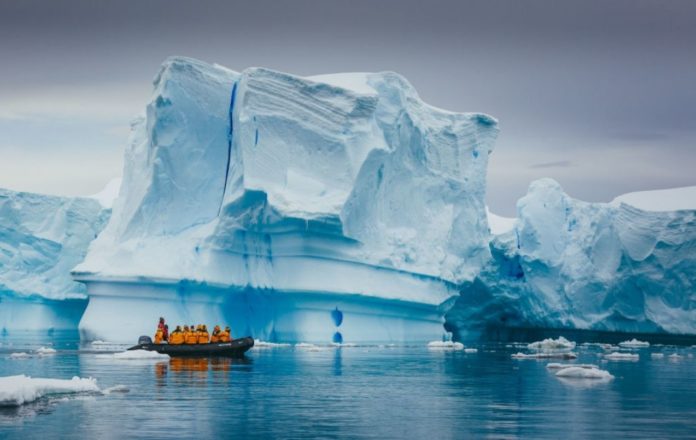Approximately 5,000 scientists live on the frozen continent year round, studying the unspoiled area to learn more about Earth’s past and the impacts of climate change.
Its desolate terrain provides them with access to a unique setting where they may conduct their study despite temperatures as low as -90 degrees Celsius.
But there’s a lot more going on under the frozen surface than most people realise.
- Scientists in Fear of This New Predator From Red Sea Eating Native Species in Mediterranean
- Does This Mean We Stopped Being Animal and Started Being Human Due to ‘Copy Paste’ Errors?
- The One Lifestyle Choice That Could Reduce Your Heart Disease Risk By More Than 22%
- Aging: This Is What Happens Inside Your Body Right After Exercise
- Immune-Boosting Drink that Mimics Fasting to Reduce Fat – Scientists ‘Were Surprised’ By New Findings
NASA scientists have reported the discovery of two new lakes hidden under the Antarctic Ice Sheet.
They are part of a huge network of underground rivers buried under 1.2 to 2.5 miles of ice.
These lakes are believed to fill and drain in unexplained cycles that may affect how quickly the ice sheet moves and how and where meltwater enters the Southern Ocean – a critical mechanism for global ocean circulation.
“It’s not just the ice sheet we’re talking about,” said study leader Professor Matthew Siegfried, a geophysicist at Colorado School of Mines.
We’re really talking about a water system that is connected to the whole Earth system.
The bottom of the ice sheet’s water system was originally discovered in 2003, courtesy to NASA’s ICESat mission.
After analyzing data, scientists discovered that changes in ice height in West Antarctica indicated a massive amount of subglacial water flow under the ice sheet.
Hidden meltwater lakes were originally thought to exist in isolation, cut off from one another.
However, in 2007, researchers discovered that variations in the height of Antarctica’s surface ice indicated the movement of water moving between a secret network of subglacial lakes, which alternately fill and drain before escaping to the Southern Ocean.
ICESat-2, the follow-up mission to the ICESat mission, is now providing scientists with an even better grasp of the enigmatic network.
Prof Siegfried detailed:
The discovery of these interconnected systems of lakes at the ice-bed interface that is moving water around, with all these impacts on glaciology, microbiology, and oceanography – that was a big discovery from the ICESat mission.
ICESat-2 is like putting on your glasses after using ICESat, the data are such high precision that we can really start to map out the lake boundaries on the surface.
The team’s latest research combined data from ICESat-2 and the original ICESat mission, as well as readings from the European Space Agency’s CryoSat-2 ice-observing satellite.
Researchers can monitor the active sub-glacial lakes by analysing the data, from 2003 to 2020.
In their paper, they stated:
Surface deformation due to active subglacial lakes filling and draining provides one of the few remotely accessible windows into the evolution of basal water systems.
These systems are otherwise hidden beneath up to 2.5 miles of ice and remain one of the major physical uncertainties on projections of future ice sheet dynamics.
- Scientists in Fear of This New Predator From Red Sea Eating Native Species in Mediterranean
- Does This Mean We Stopped Being Animal and Started Being Human Due to ‘Copy Paste’ Errors?
- The One Lifestyle Choice That Could Reduce Your Heart Disease Risk By More Than 22%
- Aging: This Is What Happens Inside Your Body Right After Exercise
- Immune-Boosting Drink that Mimics Fasting to Reduce Fat – Scientists ‘Were Surprised’ By New Findings
ICESat-2 laser altimetry can not only extend the record of subglacial lake activity but also provides a better understanding of hydrological processes by capturing denser and more precise spatial detail.
